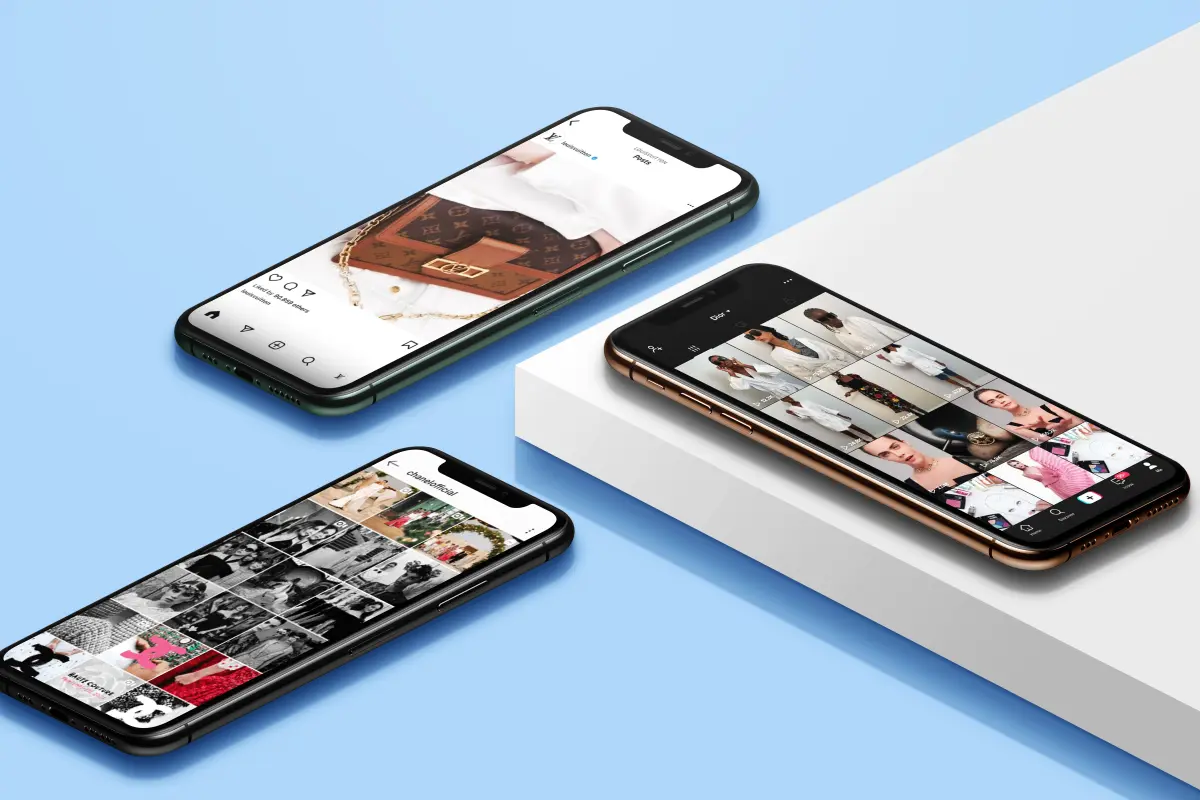
In the fast-paced fashion industry, staying ahead of trends is crucial. Social media has become a powerful force in shaping what’s in and what’s out. Influencers, fashion bloggers, and everyday consumers post their outfits, creating a real-time pulse of style preferences. But how can brands effectively harness this massive influx of data to make informed, data-driven decisions about their next collection? Enter Product Lifecycle Management (PLM) software, a tool that streamlines and strengthens the link between fashion social media insights and trend forecasting.
The Power of Fashion Social Media
Fashion social media platforms like Instagram, TikTok, and Pinterest are more than just a space for outfit inspiration; they have evolved into global trend generators. New styles emerge overnight, and influencers push niche trends into the spotlight with just a few posts. In the blink of an eye, a celebrity’s red carpet look or a viral TikTok dance outfit can dictate what millions of consumers will want to buy next.
For fashion brands, the stakes are high. Missing out on a trend can lead to lost revenue opportunities while capitalizing on it can boost sales and brand awareness. It’s no surprise that social media is now a central component of fashion marketing and product development strategies.
However, with the sheer volume of content and trends generated on these platforms daily, brands need to know how to sift through the noise and recognize the key trends. This process can be overwhelming without the right tools. That’s where PLM software steps in to help brands efficiently navigate through vast amounts of social media data.
What is PLM Software?
PLM software helps fashion brands manage every phase of a product’s lifecycle, from initial concept and design to production and sale. It acts as a central repository for all product-related data, enabling teams across design, development, and marketing to work collaboratively. But in today’s fast-evolving market, PLM is becoming much more than a storage system for product information. Modern PLM systems are now integrating trend forecasting and social media analysis, providing a much-needed bridge between consumer-driven trends and product planning.
By integrating PLM software into their operations, fashion brands gain better control over the entire process of bringing a product to market. PLM allows designers to manage sketches, materials, and colors while collaborating with suppliers and manufacturers. These systems have evolved beyond their original purpose of organizing product information to play a key role in forecasting trends and making data-driven decisions.
Closing the Gap: From Social Media to Product Decisions
The gap between trend forecasting and product development used to be wide. Designers would rely on market research, fashion shows, and their instincts to guess what the next big thing might be. This process often resulted in missed opportunities and unsold inventory. Today, thanks to the synergy between social media and PLM software, brands have the tools to minimize guesswork and make data-driven decisions.
Here’s how PLM software helps close the loop between social media insights and fashion trends:
1. Real-Time Data Collection and Analysis
Social media never sleeps, especially fashion social media. It operates 24/7, and so does the data it generates. PLM software, equipped with AI and machine learning capabilities, can monitor social media platforms in real-time, collecting data on trending styles, popular influencers, and consumer preferences.
For instance, if oversized jackets start trending on Instagram, the PLM system can flag this early on, allowing designers to integrate the trend into their upcoming collections before competitors catch on. Instead of relying on quarterly trend reports, brands can react instantly to social media insights, keeping their offerings fresh and relevant.
In addition, these systems can perform sentiment analysis to gauge how consumers are responding to certain trends. By analyzing user comments, likes, and shares, fashion PLM can differentiate between fleeting fads and long-lasting trends, helping brands make more accurate product development decisions.
Case Study: The Rise of “Cottagecore”
A recent trend that saw massive traction on social media was the “Cottagecore” aesthetic—a romanticized version of rural life with soft, vintage-style dresses, knitwear, and nature-inspired prints. Brands that acted quickly to produce Cottagecore-inspired collections found themselves at the forefront of a niche but growing consumer segment. Those that were able to identify and respond to this trend through apparel PLM integration saw increased engagement and higher sales, while slower competitors struggled to keep up.
2. Integration with Trend Forecasting Tools
Modern PLM software goes beyond basic data collection by integrating with trend forecasting tools. These tools analyze social media trends, search engine data, and even consumer purchasing patterns to predict what will be in demand in the future.
By having this trend data directly available in the PLM system, designers and product developers can make informed decisions. They can validate whether a viral trend is likely to have staying power or if it’s just a fleeting fad. This reduces the risk of producing items that may quickly fall out of favor, helping brands save both time and resources.
For example, trend forecasting tools may predict the resurgence of 90s fashion, based on social media mentions and growing interest in nostalgic styles. Fashion brands can then use PLM software to adapt their designs, ensuring they’re prepared for the return of grunge, slip dresses, or oversized blazers.
The integration of trend forecasting into fashion PLM not only helps companies stay ahead of consumer preferences but also aids in better financial planning and inventory management. Brands can forecast demand for upcoming seasons, avoiding excess stock or stockouts that hurt profitability.
3. Streamlining Collaboration Across Teams
PLM software acts as a single source of truth for all product-related data, from initial inspiration to final production. When social media insights suggest a new trend, it’s not just the design team that benefits. Merchandisers, marketers, and supply chain managers can all access the same data, ensuring that everyone is aligned on what consumers want.
For example, if a social media trend suggests a rise in demand for sustainable fabrics, the PLM system can quickly disseminate this information across all departments. Designers can source eco-friendly materials, marketers can highlight sustainability in their campaigns, and supply chain managers can ensure that production processes are aligned with the brand’s green initiatives.
Fashion PLM enables seamless communication between departments, reducing miscommunication or delays that could slow down the design-to-market process. When everyone is working from the same set of social media insights, product launches can be more cohesive, impactful, and timely.
4. Faster Time to Market
Speed is everything in the fashion industry. The faster a brand can go from concept to consumer, the better. Social media insights give brands an edge, but acting on them quickly is key. PLM software helps accelerate this process.
By integrating social media data into the PLM system, brands can streamline their workflows. Design revisions, sample approvals, and production timelines can all be managed efficiently within the platform. This means that when a trend takes off, brands can quickly pivot, producing and delivering the right products to consumers faster than ever before.
The faster a brand reacts to social media insights, the more likely they are to dominate the market. Waiting too long to release a collection based on a trending topic risks missing the peak of the trend. Fashion PLM’s ability to shorten development cycles gives brands a competitive advantage in a crowded marketplace.
Fast Fashion vs. Slow Fashion: How Speed to Market Plays a Role
The rise of fast fashion brands like Zara and H&M was fueled by their ability to rapidly produce new styles based on emerging trends. However, the use of PLM software also benefits slow fashion brands. These brands can harness social media insights to better plan and predict consumer demand without contributing to overproduction or waste. By forecasting demand accurately, slow fashion brands can prioritize ethical manufacturing practices while still delivering products that resonate with current trends.
5. Improving Sustainability Efforts
In addition to optimizing trend forecasting and decision-making, apparel PLM software is playing a pivotal role in improving sustainability in the fashion industry. By analyzing social media trends, fashion brands can better predict demand, preventing overproduction and reducing waste. Brands can also track customer interest in sustainable materials and eco-conscious fashion, integrating these preferences into their production cycles.
Social media frequently amplifies sustainability movements. Consumers are becoming increasingly vocal about the environmental impact of fashion, pushing for more transparency and ethical practices. By capturing these sentiments early, brands can adjust their supply chains to meet consumer demand for greener options. This aligns with industry-wide efforts to reduce the environmental footprint of fashion, all while maintaining profitability.
For example, the rise of consumer interest in circular fashion, where clothing is designed to be recycled or reused, has gained momentum on social platforms. Brands that capture these trends through their fashion PLM software can integrate them into their production processes, providing consumers with sustainable, long-lasting options. As social media users call for greater transparency, fashion companies are now adopting PLM systems that track not only product information but also environmental impact, worker safety, and labor practices.
Case Study: How a Fashion Brand Used PLM to Respond to Social Media Trends
Let’s look at a real-world example of how PLM software can transform the way fashion brands respond to social media trends.
Imagine a mid-sized fashion brand that specializes in athleisure wear. The brand notices a sudden spike in social media posts featuring tie-dye workout clothes. Using its PLM software’s social media monitoring capabilities, the brand quickly identifies that this trend is not just a passing phase but gaining momentum.
By leveraging the forecasting tools within their fashion PLM, the brand determines that the demand for tie-dye clothing will continue into the next season. The design team uses the apparel PLM to source appropriate fabrics, and the development team quickly works on prototyping. Meanwhile, the marketing team creates a social media campaign around the new collection, all while monitoring feedback and engagement in real-time.
Thanks to the speed and efficiency provided by the PLM system, the brand is able to launch its tie-dye collection within weeks of identifying the trend. Sales spike and the brand solidifies its reputation as a trendsetter in the athleisure market.

The Future of Fashion is Data-Driven
The fashion industry is shifting toward data-driven decision-making. Social media platforms will continue to influence trends, but with PLM software, brands no longer have to rely on intuition alone. They can track real-time insights, forecast trends, and make informed choices backed by data.
This shift not only improves profitability but also enhances the overall customer experience. Consumers are more likely to connect with brands that reflect their current tastes and preferences. When a fashion brand uses fashion PLM to align with real-time trends, they deliver what their customers want, when they want it.
Conclusion
Social media insights are shaping fashion trends more than ever before. The integration of PLM software enables brands to effectively bridge the gap between data and action. By analyzing real-time social media data, predicting future trends, and facilitating cross-department collaboration, PLM allows fashion companies to close the loop between trend forecasting and product development.
In a market where trends shift at lightning speed, having a robust fashion PLM system ensures that brands remain agile, innovative, and responsive to consumer demands. The future of fashion belongs to those who can harness the power of social media insights and make data-driven decisions that resonate with their audience. apparel PLM software is the key to closing that loop, paving the way for smarter, faster, and more sustainable fashion.





Leave a Reply